October 9th, 2012, is a day Terese Edwards will never forget. A long-time campaigner for single mothers, Edwards was protesting on the lawns of Parliament House, desperate to stop the Gillard government cutting entitlements to single mothers.
The bill before the Senate that day would move all single parents with children over the age of eight off the single parenting payment, and onto the lesser unemployment allowance, Newstart.
It was the final step in John Howard’s Welfare to Work reforms, and one aimed at cutting costs. The bill would save just $728 million over four years – small change for the government, but a life-altering amount for single parents, who would lose $60 to $100 a week.
“I remember walking up to the Senate and watching Labor support this bill,” says Edwards, the head of the National Council for Single Mothers and their Children. “I went into the bathrooms, had a couple of tears and washed my face, so I could get back to advocating.”
Single parents would lose $60 to $100 a week
In the other house of parliament, then prime minister Julia Gillard was making history. Responding to an accusation of sexism from then opposition leader Tony Abbott, Gillard rose to deliver ‘the misogyny speech’ – a nation-stopping address that would go viral around the world and would come to define her prime ministership.
Meanwhile, in the Senate, the government quietly passed its bill to strip single parents of their entitlements.
What we now know, thanks to newly discovered data, is that the majority of the single mothers stripped of their entitlements were survivors of family violence and coercive control. They were the women who had, as the government had urged, left their violent partners. They were the women being punished, so the government could save less than $200 million per year. Over the next decade, Coalition governments devised ever more punitive government policy that replicated the kind of coercive control these survivor mothers had risked their lives to escape.
The majority of the single mothers stripped of their entitlements were survivors of family violence and coercive control
This is the blockbuster finding at the heart of a new report from one of Australia’s most renowned feminists, Dr Anne Summers, called The Choice: Violence or Poverty.
For the first time, the report has exposed shocking data showing that at least 60 per cent of single mothers with children under 18 have experienced intimate partner violence.
In 2016, these women numbered 187,500. That number is even higher today.
There were also, in 2016, at least 275,000 women who had experienced physical and/or sexual violence from their current partner.
But perhaps the most haunting statistic in Summers’ report is that almost 90,000 said they wanted to leave, but couldn’t. A quarter of those said they simply couldn’t afford to.
If anything, these numbers are likely to be less than the actual figure: Dr Summer’s findings came after combing through the 2016 Personal Safety Survey, the main data source on family violence in Australia. This survey had a more-than 40 per cent non-response rate, and surveyors are instructed to discontinue their survey if there is a chance it will put the respondent at risk. Many victim survivors – especially those being monitored by their partners electronically – would refuse to answer a long and detailed survey about their experiences of violence. Among those non-responders will be many more uncounted victim survivors.
Almost 90,000 women said they wanted to leave, but couldn’t
Flawed though it is, the Personal Safety Survey is the most comprehensive national data we have on family violence. Summers’ report, which relies not just on the PSS but also other longitudinal studies, proves that government policy punishes women for leaving violence. This also exposes government working at cross purposes with itself.
Having invested billions into reducing violence against women and their children, these same governments have, Summers notes, written policies that ensure that roughly half the mothers who do leave will end up living with their children in poverty. “The government may not be able to immediately stop domestic violence,” writes Summers, “but it could stop poverty. It chooses not to.”
As it stands, the lens government has on this is so severely limited, the National Plan to Reduce Violence Against Women and their Children – circulated confidentially in March – does not even mention ‘single mothers’ or ‘single parents’.
The government may not be able to immediately stop domestic violence, but it could stop poverty. It chooses not to
On every second line of Summers’ report there is data that either stimulates further questions, or upends victim-blaming stereotypes. There it is, in black-and-white, that the average wage for mothers who experienced intimate partner violence was ‘about the same’ as mothers who didn’t. In other words, on average, they didn’t start out poor – leaving violence made them poor.
After separation, mothers who had experienced partner violence saw their income drop by 34 per cent, compared with 20 per cent who hadn’t.
And they never recouped what they lost – after separation, the income among mothers who had experienced partner violence only rose by 19 per cent. By comparison mothers who hadn’t faced violence regained what they lost, and then some – their incomes rebounded by 45 per cent. At the launch of her report, Summers was at pains to emphasise its central finding: ‘Poverty does not cause domestic violence. Domestic violence causes poverty.”
The report also exposes the shocking extent of coercive control experienced by single mothers.
Of the 220,000 single mothers who experienced coercive control (what the ABS terms ‘emotional abuse), a staggering 33 per cent (72,600) said their abusive partner had used electronic surveillance to monitor their movements. Another 30 per cent (66,000) had tried to prevent them from working or earning money, while 68 per cent (149,600) said their partner ‘constantly insulted them to make them feel ashamed, belittled or humiliated’, and 44 per cent (96,800) said their partner had threatened to take the children away.
Twelve per cent (26,400) said their abusive partners had threatened to harm their kids; nine per cent reported threats to animals, and six per cent (13,200) said their abusive partner actually harmed the family pet.
Disruptive to old stereotypes, too, is the finding that single mothers who had been subjected to intimate partner violence were more educated than the average Australian; 73 per cent of mothers who left violence had a post-school qualification, compared with 61 per cent of the overall population of women).
The link between domestic abuse and disability
One of the biggest differences between single mothers who have experienced violence and those who haven’t is their rate of disability. Forty-five per cent of mothers who had experienced intimate partner violence had a disability or long-term health condition, compared to 27 per cent of mothers who hadn’t.
There’s no doubt that people with disability experience violence – from intimate partners, family members and carers – at disproportionate rates, but it’s unclear from the data whether the disability/long-term health condition existed before the violence, or was incurred by the violence.
More than a third of the single mothers who fled violence had injuries severe enough to warrant medical treatment; 40 per cent of domestic violence survivors are estimated to be living with an ongoing brain injury.
“For women living with disability, the problems are amplified,” says Heidi La Paglia, director of policy at Women with Disability Australia. “They are less likely to earn their own income, more likely to rely on Centrelink, and they’re also more likely to have their partners exerting coercive control over them, controlling their NDIS payments.”
What is hinted at in this report, is not just that women and children are often impoverished by family violence. What’s also clear is that many perpetrators are enriched by it: 75 per cent of single mothers left property and assets behind.
A gap in the data
As Summers points out in the report – and as was emphasised by Gunai/Kurnai author and victim survivor Veronica Gorrie on the ABC’s Q&A – there is no indication of how many respondents to the Personal Safety Survey identify as Aboriginal and Torres Strait Islander (nor do we know how many identify as LGBTQIA+).
The ABS cites its inability to visit remote locations as the reason they can’t collect reliable statistical data on Aboriginal and Torres Strait Islander people, but that ignores the glaring fact that 80 per cent of Indigenous people live in cities and towns.
Distinguished Professor Emerita Maggie Walter, a Palawa woman, is a founding member of the Maiam nayri Wingara Indigenous Data Sovereignty Collective. “It’s ridiculous,” says Walter, “because you cannot compare data from somebody living in Galiwin’ku in the Northern Territory with data from an Aboriginal person living in Perth, and just say because they’re Aboriginal their data can be clumped together.
“You need to compare Aboriginal women who are living in similar circumstances, otherwise what you get out of it is meaningless.”
Walter says the ABS needs to make at least two major changes to get meaningful data from Aboriginal women: survey questions must be co-designed with Indigenous experts (so the answers are actually useful and the women surveyed do not feel revictimised); and the ABS should invest in collecting an appropriate sample of Aboriginal people.
“The ABS knows, from the Census, which suburbs have a high proportion of Aboriginal people. So you can go to those areas and build a sample. It’s not impossible – it might just be a little bit more expensive. The problem is, the Aboriginal side of things is only thought about at the end, so they’ve already spent the money. (Their exclusion from the Personal Safety Survey) gives you an indication of how seriously domestic violence for Aboriginal women is taken.”
As experts point out, this glaring gap is frustrating not only because Aboriginal and Torres Strait Islander women are disproportionately targeted by abusive men (many of whom are non-Indigenous), but also because they are specifically targeted by government policies that impoverish single mothers and punish their children.
Family violence is the single biggest driver of Aboriginal child removal
As outlined by the head of Aboriginal and Torres Strait Island family violence prevention and legal service Djirra Antoinette Braybrook, “Family violence is the single biggest driver of Aboriginal child removal, with 88 per cent of Aboriginal children in care having experienced family violence.”
For Edwards, Dr Summers’ report has confirmed what she has long suspected about how common domestic violence is among single mothers. “We asked the government so many times for data like this, and they just wouldn’t do it. It was a political decision not to get it, because there is a convenience in not knowing,” she tells me. “Having this report is incredible. It has really confirmed that we need to talk about single mums and safety in the one conversation. We can no longer pretend that we don’t know.”
But the implications of this report are felt most keenly by single mothers who have experienced violence, and who are the targets of punitive welfare policies.
Angela*, a sole parent living in Tasmania, is one of the countless mothers for which Terese has advocated. She and her children are a living testament to the power government policy can have over people’s lives.
Angela became a sole parent in July 2020, after a sudden and unexpected act of violence from her partner. “I was strangled in a public place, outside a restaurant, in front of my family, in front of the kids. We were celebrating my 40th birthday. In one blink of an eye, our whole life changed.”
Despite assaulting her in public in front of several witnesses, Angela’s ex-partner was never charged. “Police decided not to charge him before they interviewed me, before they took a statement from the other woman he assaulted – before they took a statement from anyone there. They just decided they weren’t gonna charge him.”
The police did, however, call child protection. “So I got a call from child protection, making sure I was keeping my children safe. And I was just like, “Are you serious? What am I doing?” And they were like “We’re just acting on behalf of the children,” and I said, “Well, what he did was child abuse – strangling their mother in front of them. And police don’t want to charge.”
Angela’s ex-partner bolted interstate. While he was gone, she got back to the house and packed up her children’s belongings as quickly as she could. In the end, despite the fact she was left to end the lease and clean the property, the bond was returned to him. In all, just getting out of her rental and moving across the state cost Angela and her daughters more than $11,000.
Since July 2020, Angela has been a sole parent to three ‘amazing’ girls, aged 4, 8 and 13. She describes the experience of leaving a violent partner as ‘life-shattering’.
“One day we were going about our life, we had a future planned out, we had a home, and we had goals we were working towards. The next we had none of this. Now we are living in poverty.”
There was only one saving grace for Angela and her girls: they left at the height of the pandemic, just after the federal government temporarily doubled the rate of Jobseeker. “I was really lucky,” says Angela. “It was much easier for me to go through that awful process because the [Coronavirus] supplement was in place, and there was $880 extra per fortnight. That, and dipping into my super; I didn’t have to stress about money because of those two things. It was still tight, but without that, I don’t know where I would have been.”
Angela was one of hundreds of thousands of single parent families who were able, for a few short months, to live above the poverty line. Before Covid, the poverty rate in single parent households was 20.2 per cent. After the Coronavirus supplement, the rate of poverty fell to 7.6 per cent.
The Coronavirus supplement not only gave Angela enough to pay for moving house, it also enabled her and her girls to access counselling, which helped Angela recognise the depth of her ex-partner’s coercive control. “Then 1800 RESPECT sent me a survey to test for coercive control and I was just like jealousy – tick; degrading comments – tick; financial abuse – tick. The whole list: tick, tick, tick.”
She describes the experience of leaving a violent partner as ‘life-shattering’
Angela, like all women who leave violence with their children, had to work full-time for months just on the business of leaving. She was engaged with at least 27 different service providers, including Tasmanian Police, Women’s Legal Service, Centrelink, ParentsNext, Strong Families Safe Kids, a social worker, three GPs, the ATO, Child Support Agency, her bank, Telstra, Relationships Australia, two psychologists, removalists, her power company, and the education department.
This list is not unusually onerous; it is the norm. It becomes a lot longer when victim survivors are subjected to false allegations and reports from their former partner (to child protection, for example) or are saddled with debts and other problems from being exploited.
If they are drawn into the family law system, the full-time job of leaving can last for years. It’s impossible to briefly encapsulate the experiences of mothers and children who leave violence. What they deal with – at a time of intense trauma and often heightened threat – is often nothing short of heroic. “There are skills you get out of this, a strength,” says Angela. “You can’t put it on a resume, but the skills of a survivor are invaluable. Being able to do a million things at once – and that resilience.”
When Angela found a new place to rent halfway across the state, she surprised her girls by taking them to ‘look’ at their new house. When they arrived, they found their rooms mostly unpacked and their beds made. Angela knew she couldn’t afford to pay the rent when she signed the lease. But she was determined to find a way.
You can’t put it on a resume, but the skills of a survivor are invaluable
With the Coronavirus supplement, Angela and her girls could breathe. All up, her benefits amounted to $4,422 a month ($1105 per week, just above the poverty line for a single parent with three children, which is calculated at $950.15[JH2] ). It was just enough for them to live with dignity. She could afford to buy them one second-hand book each from their favourite bookstore. They bought ice-cream on a hot afternoon. They went out for sushi.
When the government announced that the supplement would be wound back, Angela started preparing for life below the poverty line. “I was stockpiling toiletries, shampoo, conditioner, toilet paper. I was thinking about underwear and birthday parties – two of my girls have birthdays just before Christmas, so I bought their gifts, and the food for Christmas.”
The Covid-19 supplement halved in September 2020, before ending in March 2021. Since then, “things have got progressively worse.” Angela is not alone: by withdrawing the supplement, the government sent more than half a million people back into poverty.
The monthly support for Angela’s family – a combination of Parenting Payment – Single, Family Tax Benefit Part A and B and the full amount of Rent Assistance – now amounts to $3328, or $832 per week. That must cover everything from rent to petrol, groceries and clothing.
Plus, one of her daughters needs orthodontic work; another needs a regular prescription filled. Angela needs to make that work from an income more than a hundred dollars below the poverty line. Angela has a casual job, but she can only work for five hours on a Monday – the only time she can get childcare for her three-year-old.
If Angela was receiving what she was owed in child support, her family would not be in poverty. On the child support assessment for two of her girls, she is entitled to receive $995 per month from their father. But he only pays $55 per month – and nobody from the Child Support Agency seems too bothered to chase him.
As far as the government is concerned, it doesn’t matter if he pays it or not – Family Tax Benefit Part A is reduced on the basis of child support that is owed – even if it is unpaid, or paid at a lower rate.
“I lose $400 in my Centrelink payments, even though he doesn’t actually pay it. I just don’t understand why child support isn’t managed by the ATO (Australian Taxation Office). The children of Australia are currently owed $1.7 billion. Imagine what that would do for child poverty in this country?”
Withholding child support is one of the most common forms of financial abuse post-separation. More than 200,000 parents who owe child support do not lodge annual tax returns.
Until you come into contact with systems, you just don’t understand how badly broken they can be
“People are shocked when they hear what’s going on – all the layers of stories like mine,” continues Angela. “Until you come into contact with systems, you just don’t understand how badly broken they can be.
“I don’t think people actually believe it. We just don’t believe women, we don’t believe these stories. And we don’t call perpetrators out.”
Angela says that now, she feels the leaden weight of poverty in her every breath. She has fallen behind in her rent; a private arrangement with her landlord is the only thing protecting them from eviction. Everything is getting more expensive. She dreads the once-weekly request from her girls to have school-bought lunches like their friends, because that’s an extra $14.90 they just cannot afford.
If the Labor government were to restore the Parenting Single Payment, as Summers recommends in her report, Angela says it would change her family’s life. She could go back to studying to be a social worker. But more than anything, it would be a chance to live with some dignity and peace.
“I’ve gone from having anxiety because of a violent and coercive relationship, to being diagnosed with depression in the last two weeks. I think the depression comes solely from the financial stuff,” says Angela.
“Our Government is choosing to put me and my children into poverty.”
The question for the new Labor government is: will it choose to keep them there?
With thanks to Asher Wolf for her guidance and insights





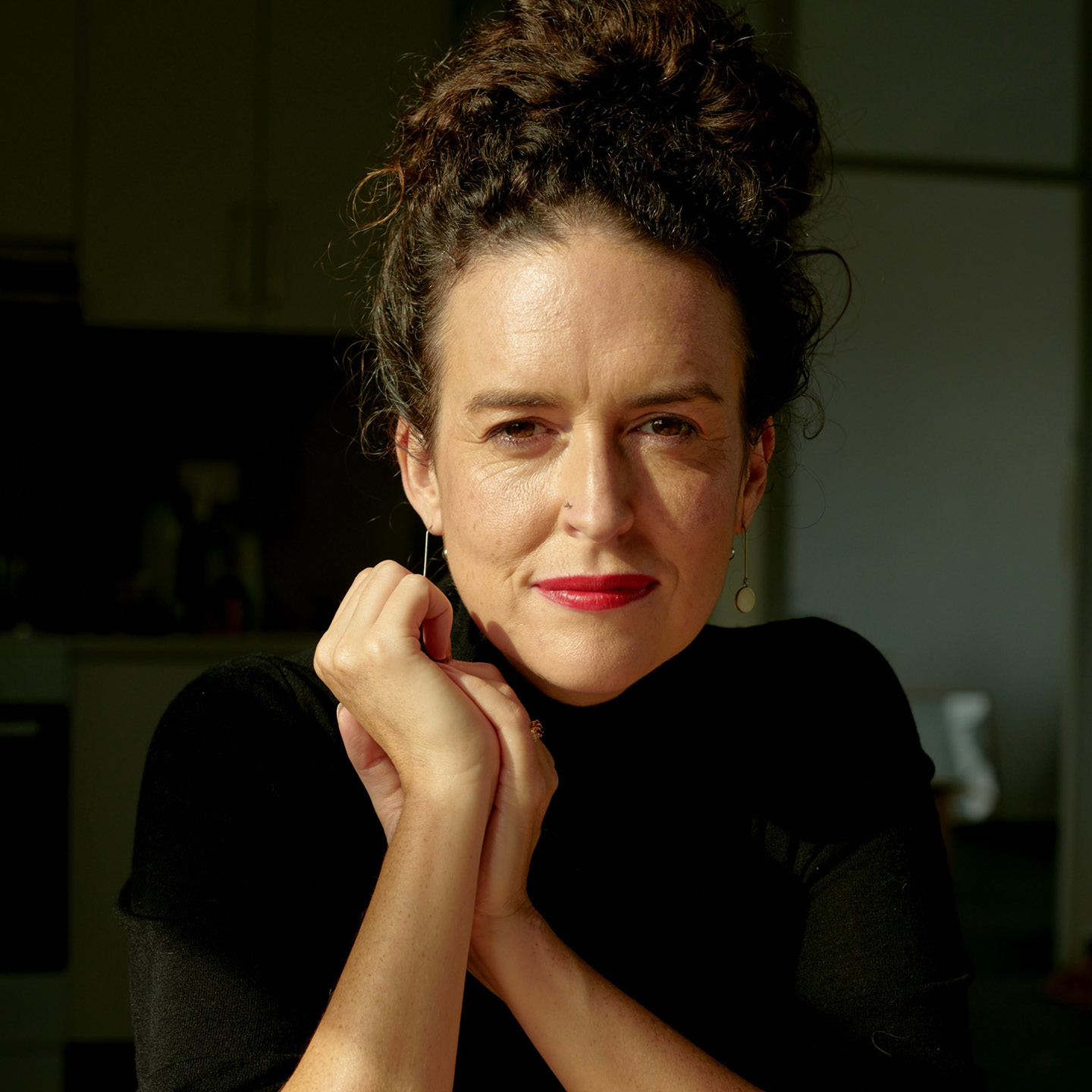

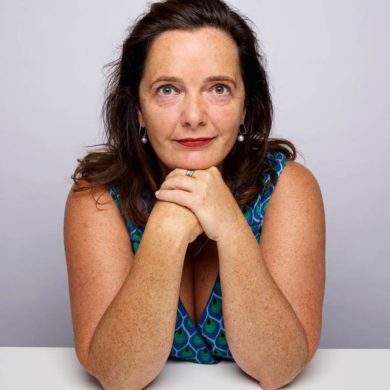
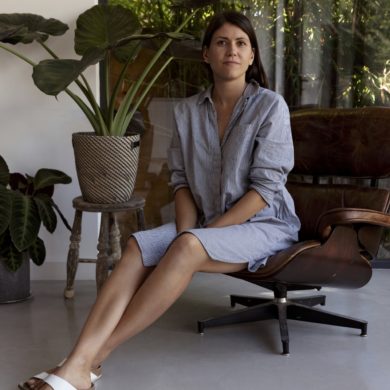
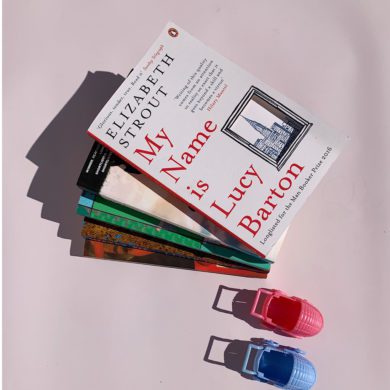
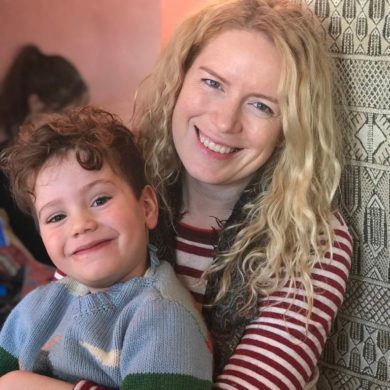
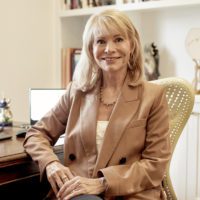
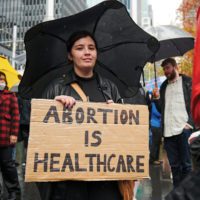
1 Comment